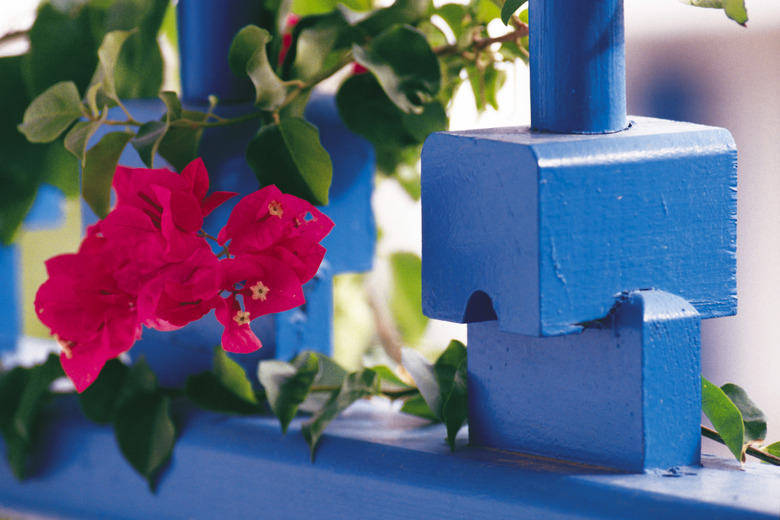Bougainvillea Leaf Curl
Robust and adaptable, bougainvilleas (Bougainvilleas spp.) are sprawling vines or shrubs that generally require minimal interference from the gardener in order to produce bright green leaves and spectacularly showy red, pink, white or purple flower bracts. Like any plant, however, bougainvilleas can develop foliage problems such as leaf curl. Leaf curl is likely the result of pests such as scale or aphids or a disease such as bacterial leaf spot. An effective management strategy will take cultural conditions into consideration.
Aphids
Step 1
Aphids are sap-sucking insects that often feed in groups on new growth. During feeding, some species inject a toxin into the plant which can cause leaf curl and distortion, according to the University of California Statewide Integrated Pest Management Program. Dislodge aphid colonies by spraying them with a direct stream of water, or combat them with natural predators by purchasing and releasing lady beetles. If aphids are concentrated in large numbers in one part of the plant, prune that area.
- Robust and adaptable, bougainvilleas (Bougainvilleas spp.)
- Like any plant, however, bougainvilleas can develop foliage problems such as leaf curl.
Bacterial Leaf Spot
Step 1
Bacterial leaf spot initially appears as small, reddish spots on foliage that grow to become large dead areas. Eventually, leaf edges may become ragged and the leaves may have a puckered, curled appearance. The disease pathogen is spread by water, so avoid overhead irrigation or otherwise splashing water on the leaves. Remove infected leaves and destroy them. Do not use infected leaves in compost or purchase plants that show evidence of leaf spot.
Scale
Step 1
Soft scale insects may attack bougainvillea, causing a host of symptoms that include leaf curl. Leaves may also yellow and drop prematurely. Soft scale may leave behind honey dew, which attracts a sooty mold. To control a severe scale infestation, apply a refined horticultural oil evenly to the tops and undersides of leaves in late winter or early summer, when young scale crawlers are active. Follow label instructions exactly and keep oil stored safely out of the reach of children.
- Bacterial leaf spot initially appears as small, reddish spots on foliage that grow to become large dead areas.
- To control a severe scale infestation, apply a refined horticultural oil evenly to the tops and undersides of leaves in late winter or early summer, when young scale crawlers are active.
Culture
Step 1
A healthy vine is less likely to succumb to pests and disease. Boungainvilleas are best suited for U.S. Department of Agriculture plant hardiness zone 10, according to the Clemson Cooperative Extension, though with winter protection they may be grown in zone 9. Bougainvilleas are not at all shade tolerant and require a bright, sunny location with well-draining soil. Fertilize in early spring and midsummer with 1 to 2 pounds per 100 square feet of a balanced 10-10-10 fertilizer.
